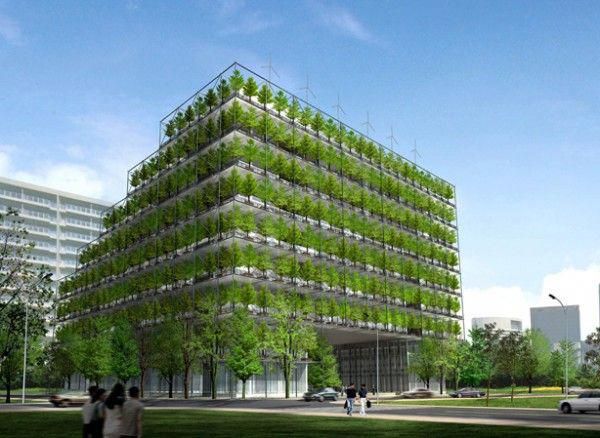In the face of environmental challenges, green building architecture has emerged as a beacon of sustainable development. This approach integrates eco-friendly principles, energy efficiency, and innovative design to create structures that minimize their environmental impact. By focusing on resource conservation and promoting a harmonious relationship between the built environment and nature, green building architecture is shaping the future of construction.

What is green building architecture?
Green building architecture refers to the design, construction, and operation of buildings in an environmentally responsible and resource-efficient manner. It encompasses various aspects, including site planning, material selection, energy and water efficiency, and indoor environmental quality. The goal is to reduce the ecological footprint of buildings while enhancing the health and well-being of occupants.
Key Principles of Green Building Architecture
- Energy Efficiency: Energy-efficient designs prioritise reducing energy consumption through innovative technologies such as solar panels, energy-efficient HVAC systems, and LED lighting. Passive design strategies, including optimal building orientation and insulation, also contribute to minimizing energy usage.
- Sustainable Materials: Using materials with low environmental impact is a cornerstone of green architecture. This includes renewable, recycled, or locally sourced materials like bamboo, reclaimed wood, and recycled steel. Sustainable materials not only reduce resource depletion but also enhance indoor air quality by minimizing toxins.
- Water Conservation: Efficient water use is achieved through strategies like rainwater harvesting, greywater recycling, and low-flow fixtures. Landscapes with drought-resistant plants further reduce water consumption, promoting sustainable water management.
- Waste Reduction: Green buildings emphasize minimizing construction waste and encouraging recycling. Designing for adaptability and deconstruction ensures that materials can be reused at the end of a building’s life cycle.
- Indoor Environmental Quality: Enhancing indoor air quality and natural lighting creates healthier living and working environments. The use of non-toxic paints, ventilation systems, and large windows promotes well-being and productivity.
- Integration with Nature: Biophilic design elements, such as green roofs, vertical gardens, and natural ventilation, foster a connection between occupants and the natural world. These features improve mental health while reducing the urban heat island effect.
Benefits of Green Building Architecture
- Environmental Benefits:
- Reduced Carbon Footprint: Green buildings consume less energy and use renewable energy sources, lowering greenhouse gas emissions.
- Resource Conservation: Efficient use of materials and water ensures the preservation of natural resources for future generations.
- Economic Benefits:
- Lower Operating Costs: Energy and water efficiency lead to significant cost savings over a building’s lifespan.
- Increased Property Value: Green-certified buildings often command higher market value and attract environmentally conscious buyers.
- Health and Social Benefits:
- Improved Health: Better air quality, lighting, and temperature control contribute to the physical and mental well-being of occupants.
- Enhanced Productivity: Natural lighting and comfortable indoor environments boost employee productivity in workplaces.
Technological Innovations in Green Architecture
Green building architecture leverages cutting-edge technologies to achieve its sustainability goals:
- Smart Building Systems: These systems monitor and optimize energy and water usage, ensuring efficient operation.
- Renewable Energy Solutions: Solar panels, wind turbines, and geothermal systems provide clean energy to buildings.
- 3D Printing: This technology reduces construction waste and enables the use of sustainable materials.
- Green Facades: Living walls not only improve aesthetics but also enhance insulation and air quality.
Challenges in Green Building Architecture
Despite its benefits, green architecture faces several challenges:
- High Initial Costs: Sustainable materials and technologies often have higher upfront costs, deterring some developers.
- Lack of Awareness: Many stakeholders remain unaware of the long-term benefits of green buildings.
- Regulatory Barriers: Inconsistent building codes and standards across regions can hinder the adoption of green practices.
Global Examples of Green Building Architecture
- The Edge (Amsterdam, Netherlands): Known as the world’s greenest office building, The Edge features solar power, rainwater harvesting, and smart energy systems.
- Bosco Verticale (Milan, Italy): This vertical forest integrates over 900 trees and 20,000 plants, improving air quality and biodiversity.
- Bullitt Center (Seattle, USA): Designed as a “living building,” it generates its energy through solar panels and collects rainwater for all its water needs.
The Future of Green Building Architecture
As climate change intensifies, the demand for sustainable construction will continue to grow. Governments and organisations worldwide are incentivising green building practices through certifications such as LEED (Leadership in Energy and Environmental Design) and BREEAM (Building Research Establishment Environmental Assessment Method).
Emerging trends, including net-zero energy buildings, modular construction, and advanced recycling technologies, will further revolutionise the field. Collaboration between architects, engineers, and policymakers is crucial to overcoming challenges and driving innovation.
Conclusion
Green building architecture is not just a trend but a necessity for a sustainable future. By embracing eco-friendly designs and technologies, we can reduce environmental impact, improve quality of life, and create resilient communities. As we move forward, investing in green architecture will be key to addressing global environmental challenges and ensuring a better planet for future generations.


Pingback: Top Architects in Coimbatore